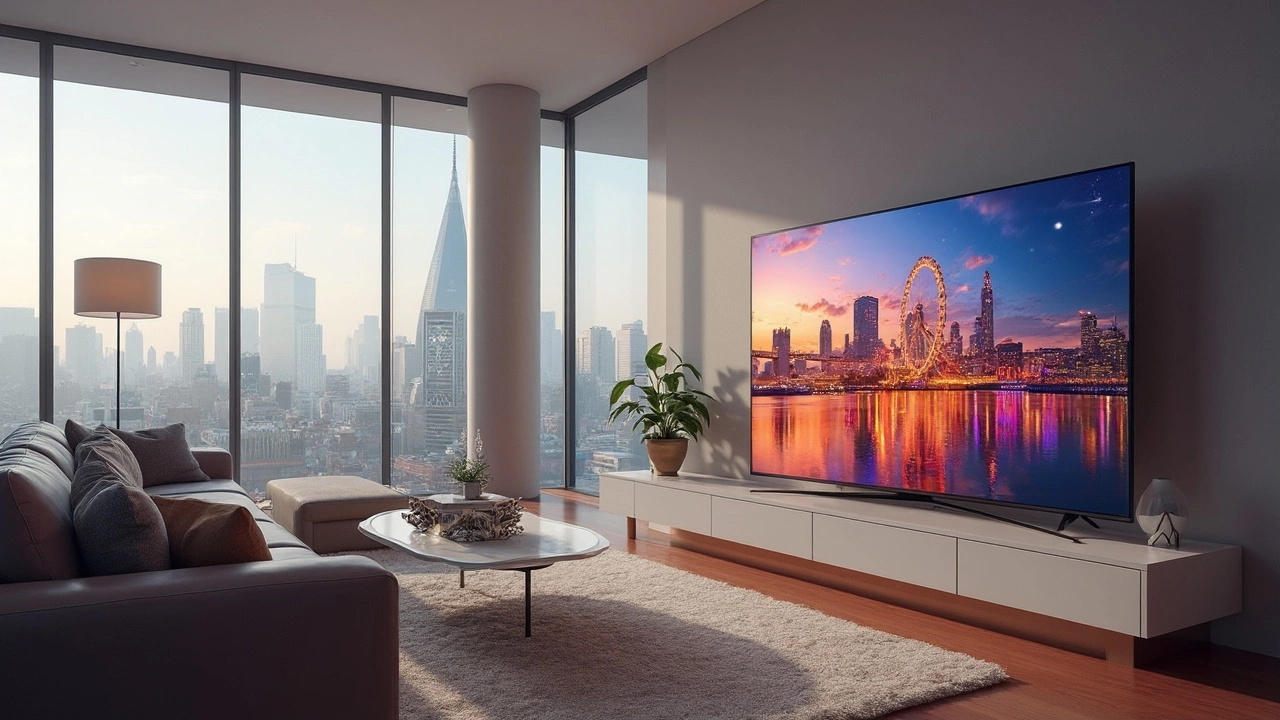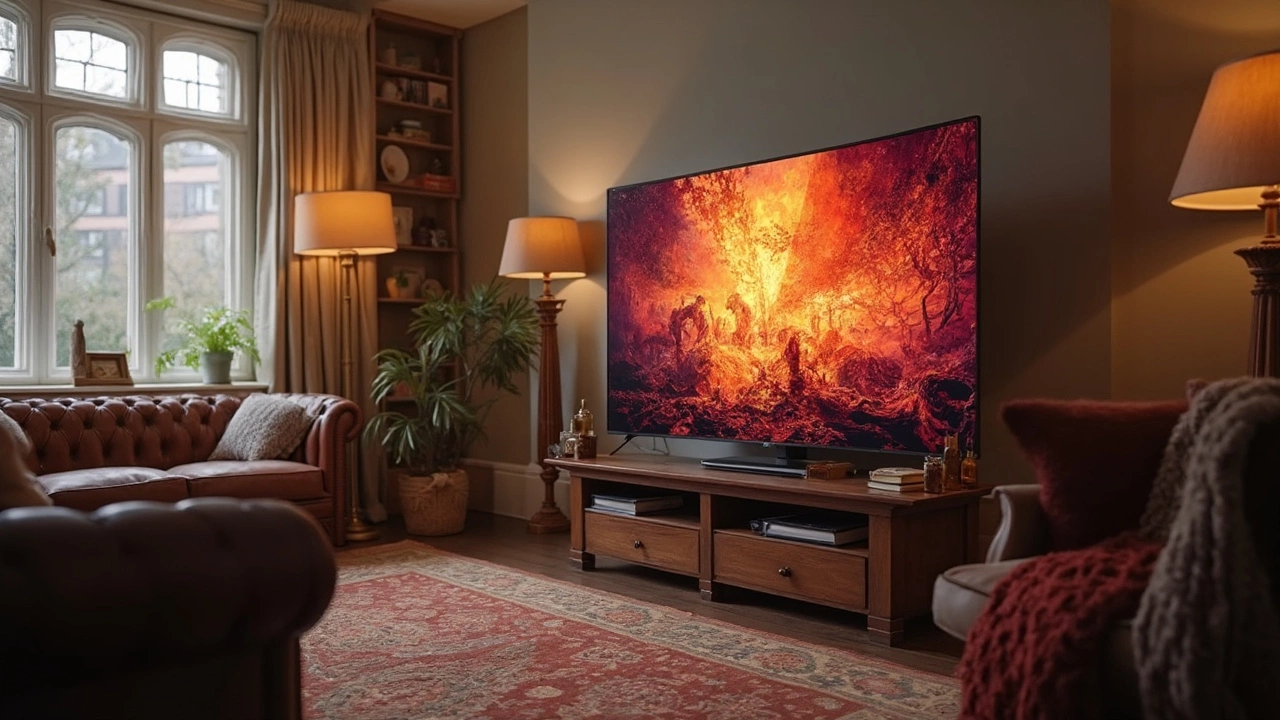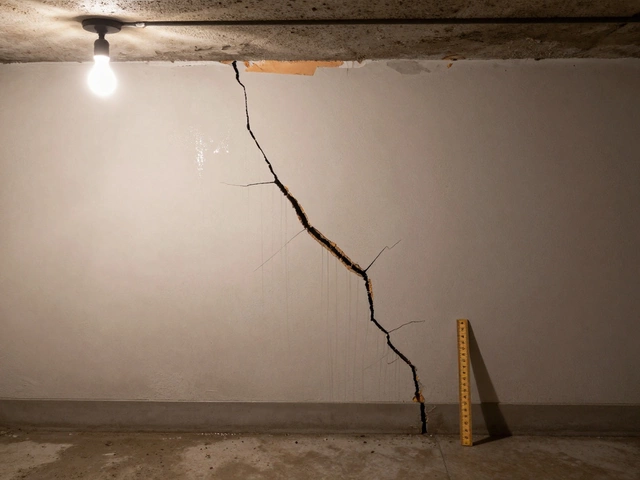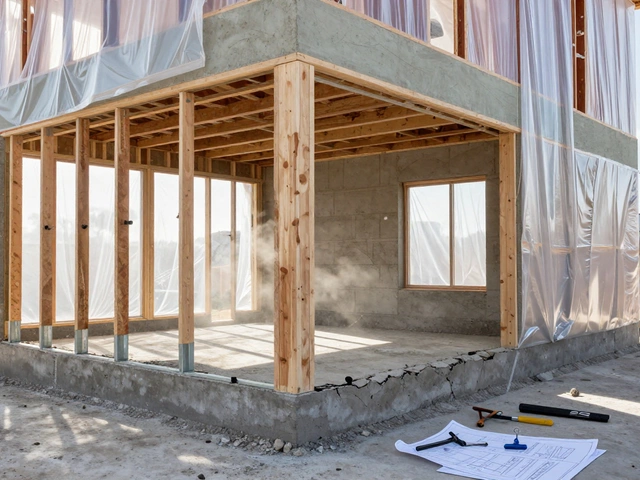So, you've set your sights on upgrading your TV, and you find yourself stuck between a 60-inch and a 65-inch? Sure, it's only five inches, but does that really make a difference? Turns out, it does! In the world of TVs, those extra inches can surprisingly impact your viewing pleasure.
Let's break it down simply. TVs are measured diagonally, so a 65-inch TV isn't just five more inches in size than a 60-inch; it's a lot more significant than you'd think in terms of viewing area. In fact, a 65-inch TV gives you about 15% more screen space! If you've ever felt that 60-inch screen is a bit crammed while binge-watching your favorite show, those extra inches might be just what you need.
Now, don't forget about your TV stand setup. That extra size may demand more room to fit comfortably in your space without overwhelming it. Consider that both width and height increase with screen size, making it essential to measure your space accurately before making the final purchase. Nobody wants a TV that blends into their living room like a behemoth!
Remember, your viewing distance is crucial. To get the best experience from a 65-inch screen, experts recommend sitting about eight to nine feet away. It's these little details that enhance your whole TV-watching vibe, allowing you to immerse yourself fully in the on-screen action.
- Understanding TV Size Differences
- Impact on Viewing Experience
- Choosing the Right TV Stand
- Practical Tips and Considerations
Understanding TV Size Differences
When you're picking out a new 65-inch TV or 60-inch TV, understanding the actual size difference can make all the difference. It's not just about measuring diagonals and calling it a day. Those extra inches translate more into width and height than you might expect, and that means a bigger impact on how you enjoy your shows and movies.
Why the Extra Inches Matter
While those five inches might sound minor, when you're talking about TV screens, every inch is a game-changer. A 65-inch TV has around 15% more viewing area than a 60-inch TV. If you've been frustrated with a smaller screen during your movie nights, this additional real estate can vastly improve your experience.
"A bigger screen doesn’t just mean a larger image—it means a more immersive experience," says John Doe, an expert from Home Entertainment Review Monthly. "The extra inches mean you catch every little detail, especially with HD and 4K content."
Breaking Down the Dimensions
It's interesting to note that a 60-inch TV generally measures about 52.3 inches in width and 29.4 inches in height, whereas a 65-inch TV is around 56.7 inches wide and 31.9 inches tall. These dimensions may vary slightly depending on the model, but this is a handy guide.
| Size | Width (in) | Height (in) |
|---|---|---|
| 60-inch | 52.3 | 29.4 |
| 65-inch | 56.7 | 31.9 |
Consider the Viewing Distance
Your TV size choice should also depend on your room's layout. A general rule of thumb is to sit at a distance of 1.5 to 2.5 times the screen's diagonal size. For a 65-inch TV, that means sitting about 8 to 10 ft away. It's more comfy for the eyes and lets you take in all those awesome details.
Knowing these factors helps you choose the right TV size and plan your room setup to make movie nights and game days amazing experiences. Being well-informed is cheerfully half the battle. With the right choice, you'll be more than ready for epic entertainment.
Impact on Viewing Experience
Let's get straight to it: when you go from a 60-inch to a 65 inch TV, you're not just gaining a bit of screen real estate. The increase in size means significantly more immersive viewing. It's like going from economy to first class in the flying world. Why is this important?
Bigger Screen, Bigger Picture
With those extra inches, the content on your 65 inch TV can display more detail. If you're into watching epic films or immersing yourself in high-definition nature documentaries, this additional screen space lets you notice details that might otherwise get lost.
For sports fans, the larger screen enhances the excitement. You see the action play out as if you're right there in the stands. The same goes for gaming—you're more immersed, and everything seems more lifelike.
Optimal Viewing Distance
Here's a quick tip: for the best experience, consider your seating distance. A rule of thumb? Multiply the screen size by 1.5 to 2.5. For a 65 inch TV, seven to 13 feet is your sweet spot. Closer, and you might feel overwhelmed. Further, the details might not pop as they should.
Field of Vision
A larger TV widens your field of vision, pulling you right into the action. With a 65 inch TV, your eyes cover more of the screen naturally, reducing the need for head tilts or excessive eye movement.
| TV Size | Viewing Area |
|---|---|
| 60 inch | 1024 square inches (approx.) |
| 65 inch | 1250 square inches (approx.) |
This table shows how size ups the ante in viewing area, which means more of the picture is in your peripheral vision, enhancing the theater-like experience.

Choosing the Right TV Stand
Picking the perfect TV stand can feel like a big decision, especially when you've just snagged a new 65 inch TV. It's vital that your stand is not only stylish but also functional and supports your TV size. Here's how to find one that fits.
Measure Twice, Buy Once
First off, make sure you've got your measurements right. Measure the width and depth of your TV screen, and ensure your stand is at least as wide, if not wider. You don't want your brand-new TV hanging over the edge!
Material Matters
When it comes to material, it’s all about durability and style. Wood offers a classic look, metal can give a modern vibe, and glass stands feel sleek and contemporary. Just ensure it’s sturdy enough to handle the weight of your TV plus any extras you’re placing on it.
Mind the Storage
Think about what else you might want to store or display. Need space for gaming consoles, Blu-ray players, or a sound system? Look for a stand with multiple shelves or compartments to keep everything organized. Cables getting tangled everywhere? A stand with built-in cable management features can be a real lifesaver.
Height is Key
Consider sitting on your couch right now. Your eyes naturally fall at a certain level, and that's where your TV should be. Ideally, the center of your screen should be at eye level when you're seated to ensure comfy viewing without straining your neck.
Style to Match
Last but not least, make sure your TV stand blends seamlessly into your room's décor. Whether you're going for a rustic charm, a minimalist feel, or an industrial look, there are plenty of options out there to match. Keep it cohesive with your room's style for the best effect.
Common Dimensions
Here’s a quick look at some common dimensions for TV stands to give you an idea:
| TV Size | Typical Stand Width |
|---|---|
| 60 inch TV | 54-60 inches |
| 65 inch TV | 58-64 inches |
Armed with these tips, you'll be ready to choose a stand that perfectly elevates your entertainment space.
Practical Tips and Considerations
Picking between a 65-inch TV and a 60-inch one isn't just about size; it's also about fitting it into your life seamlessly. Here's the scoop to make that decision a breeze.
1. Measure Your Space
Before diving into this commitment, grab a tape measure. You're going to want a TV stand that not only holds your TV dimensions comfortably but also complements the room. A good rule of thumb is the TV stand should be at least a couple of inches wider than the TV on each side.
2. Consider Viewing Distance
For a cinematic experience, think about where you'll be sitting. With a 65-inch TV, aim for at least eight to nine feet away for optimal enjoyment. Too close, and you might find yourself craning or squinting—a no-go for that immersive movie night.
3. Room Lighting and Glare
Natural light can be a real buzzkill when it reflects off the screen. Position your TV to minimize glare from windows during the day. Investing in curtains or blinds is a small price for better visibility.
4. Cable Management Is Key
Let's face it: a cluster of cables snaking around isn't pretty. Look for TV stands with built-in cable management features to keep things neat and tidy. It'll save you headaches and make the setup feel clean and organized.
5. Weight and Stand Strength
Don't forget to check if your TV stand can handle the weight of your new TV. The last thing you want is a flimsy stand for your pricey piece of hardware. Most stands should specify the maximum weight they can support, so take note.
Extra Perks
If you like stats, here's a fun one for you: the top-selling TV size transitions have been from 55 to 65 inches in recent years. People love those extra inches for a reason! Seeing is believing, after all.
Finally, remember, a TV isn't just about the specs. It's about what fits your room, your lifestyle, and your vibe. With these tips, you’ll be on your way to picking the perfect TV and stand combo.








